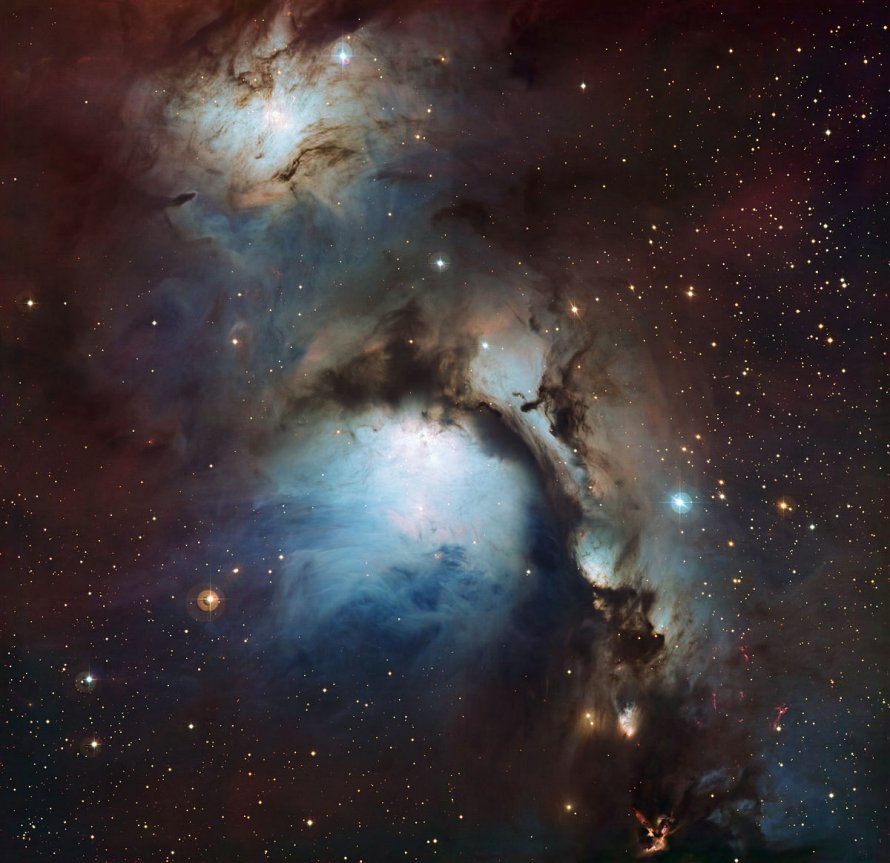M78 (NGC 2068)
Messier 78 (NGC 2068) is a diffuse nebula located in the constellation Orion, in the Orion Arm of the Milky Way Galaxy in the Local Group of galaxies. M78 is 1400 light years away from Earth.
M78 is best viewed during winter, is magnitude 8.3, and can be viewed with binoculars. M78 is 8' x 6' in apparent size. For reference, the full moon is 30'.
Observing difficulty: Intermediate
- Name:
- Type:
- diffuse nebula
- Constellation:
- Orion
- NGC or IC:
- NGC 2068
- Magnitude:
- 8.3
- Viewing:
- binoculars
- Size:
- 8' x 6'
- Distance (light years):
- 1400 LY
- RA:
- 5h 46.8m
- Dec:
- 0 4'
- Season:
- winter
- Milky Way location:
- Orion Arm
- Galaxy group:
- Local Group
- Messier Marathon #:
- 15
* The naked eye can see up to magnitude ~7-8 objects under ideal dark sky conditions.
Unveiling the Mysteries of an Intriguing Reflection Nebula
Messier 78, also known as M78 or NGC 2068, is a prominent reflection nebula located in the constellation Orion. Discovered by Pierre M?chain in 1780, and later catalogued by Charles Messier, this fascinating object is part of the larger Orion Molecular Cloud Complex, an expansive region of cosmic dust and gas that also includes the famous Orion Nebula (M42), De Mairan?s Nebula (M43), and the Horsehead Nebula.
Characteristics of M78
Messier 78 is primarily a reflection nebula, which means it is composed of interstellar dust that reflects the light of nearby stars, thus creating its unique glow. Within M78, over 40 young stars less than a million years old have been identified, making it a stellar nursery where new stars are being formed. The nebula's blue tint is characteristic of reflection nebulae and is due to the scattering, or reflection, of shorter blue wavelengths of light by the dust particles.
Among the young stars within M78, two brighter stars of 10th magnitude?HD 38563A and HD 38563B?dominate and are primarily responsible for making the nebula visible. The light from these stars is what illuminates the surrounding gas and dust.
Magnitude and Size
Messier 78 has an apparent magnitude of 8.3, making it the brightest reflection nebula in the night sky. It spans an area of about 8 x 6 arc minutes, translating to a physical size of around 5 light-years at its estimated distance of approximately 1,600 light-years from Earth.
Finding and Viewing M78
To locate M78, one must first find the familiar constellation of Orion, visible from virtually all populated regions of the globe during the winter months. Start by locating Orion's belt, a distinctive line of three bright stars. Extend this line to the northeast to find the bright star Aldebaran in the constellation Taurus, but stop midway. The patch of sky just west of Aldebaran is where M78 is located.
Despite its relative brightness for a reflection nebula, viewing M78 can be somewhat challenging due to its diffused nature. With binoculars or a small telescope, it appears as a faint, hazy patch of light. However, under dark sky conditions and with larger telescopes, more detail becomes visible, including the blue hue of the nebula and potentially some of the nebula's structure.
Observing M78 requires patience and experience in discerning the subtle features of deep sky objects. Its ethereal beauty is best captured through long-exposure astrophotography, which can reveal not only the bright, central region, but also the fainter structures of the surrounding nebulae and dark dust lanes.
In summary, Messier 78, with its attractive bluish glow and status as a site of ongoing star formation, is an exciting target for both amateur astronomers and seasoned observers. While it may be challenging to view due to its diffused light, its unique characteristics and position within the rich star fields of Orion make the effort to find and observe M78 a rewarding endeavor.



